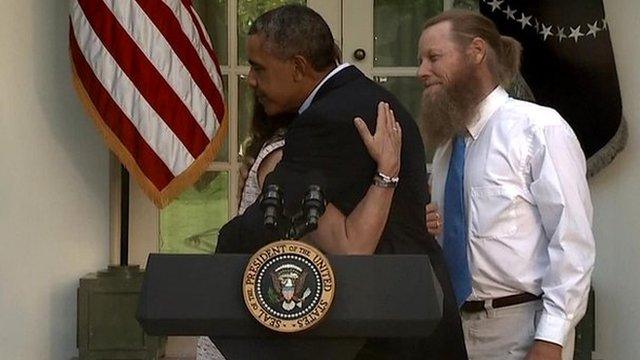Bowe Bergdahl exchange: Freed Taliban five to choose war or peace
- Published
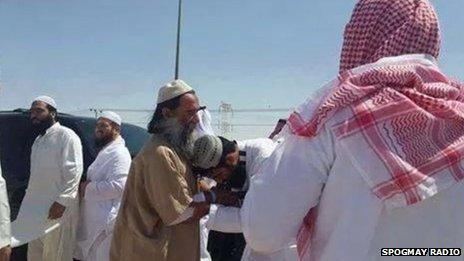
The five detainees have already arrived in Qatar
The five men freed in exchange for US soldier Bowe Bergdahl were the highest-ranking Taliban members held at Guantanamo and have almost mythical status among many of the group's fighters.
Some 13 years after they were jailed, Mohammad Fazl, Khairullah Khairkhwa, Abdul Haq Wasiq, Mullah Norullah Noori and Mohammad Nabi Omari still command significant influence within the insurgency - Taliban leader Mullah Omar has described them as "senior leaders" whose release is a "great victory".
What the men do now could have a meaningful impact on whether there is more war - or peace - in Afghanistan.
Scenario one: Moves towards peace
Critics in the US and Afghanistan may be unhappy, but the first US-Taliban prisoner exchange has built trust between the two sides and could lead to possible new breakthroughs with the militants.
Initial talks about the exchange began in 2010, a few months after Bowe Bergdahl was captured in eastern Afghanistan. But the talks broke down many times because of a number of hurdles, including the 2013 closure of the Taliban political office in Qatar under pressure from the Afghan government which was unhappy at the militants flying their flag from the building.
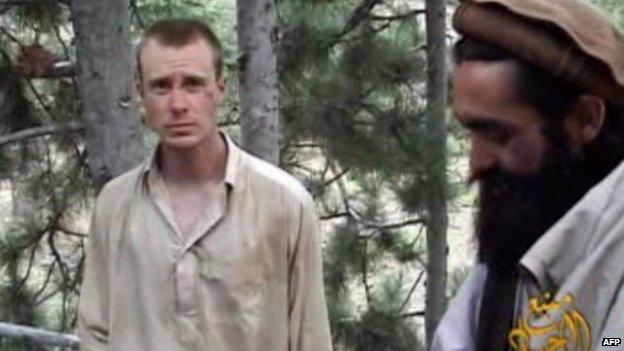
A video grab image from 2010 showed Sgt Bergdahl in captivity
About six months ago, talks between the US and Taliban restarted via the Qataris, who sent a delegation to Guantanamo to receive the Taliban inmates. At the same time, the Taliban and the US had agreed a one-day ceasefire in Ali Sher district of Khost province where an American military helicopter landed and the Taliban handed over Sgt Bergdahl.
The transfer will have built confidence between the Taliban and the US. Further moves would increase goodwill on both sides and could eventually lead to peace talks that might result in a ceasefire.
Some, if not all, of the men released had access to news in the detention facility, but they will not be fully aware of all the different interest groups that have emerged within the Taliban since the fall of the regime in 2001.
These days there are two main narratives in the insurgency.
One says that it is a matter of time before they take the whole of Afghanistan by force. Its proponents are emboldened by the US military withdrawal and see it as defeat for Nato at their hands.
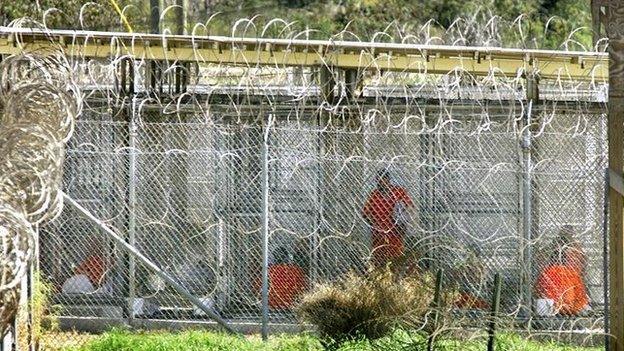
The five released inmates had all been held at Guantanamo since 2002
The other narrative says continued American engagement and an increasingly capable Afghan military will make it hard - if not impossible - to win by force. This group is interested in a political settlement to end further chaos and bloodshed.
That is why each side will be keen to have the ears of the men just released. Other parties, including the Afghan government and Pakistan, will also try to win over the "newcomers".
Of course, any meaningful peace process will depend on a number of factors, including the policy of a new Afghan president scheduled to take office in August. It's too early to tell whether the new government in Kabul will insist on fighting or commit itself to talks with the Taliban aimed at ending in a political settlement.
The number of troops the US decides to keep in Afghanistan is also a factor. The Taliban's main demand has been a full and immediate withdrawal of all foreign forces, but if a proposed security deal made clear that would happen in 2016 this could be an incentive to join a political process.
Scenario two: More war
The five Taliban leaders released are both trusted and respected by the insurgents.
Video has emerged purporting to show the Taliban prisoners arriving in Qatar
Some of them still command major fighting fronts. The Taliban groups fighting in their name have remained intact, even after the men's years in captivity at Guantanamo.
According to US officials, the government of Qatar has guaranteed that the men will not pose a risk to US forces in the future.
They are also banned from leaving the country for at least a year.
US and Qatari officials have not detailed exactly what security guarantees had been put in place by Qatar.
But while they are in Qatar, the men are able to meet other members of the Taliban office, who gave them a very warm welcome on their arrival.
If they want to rejoin the insurgency, they can have a remote but active influence on fighting by sending messages to field commanders and other Taliban leaders by telephone, letters and word of mouth.
If they do rejoin the fighting, that will not only embolden and invigorate the existing Taliban fighters, but could well serve to recruit others.
Right now it is not known what their personal priorities are. As a Taliban official said, for the time being "they will wait for the instruction of the leadership".
The timing of the release is also important. In recent months, major disagreements have emerged at the top of the Taliban leadership.
The split between Mullah Abdul Qayum Zakir and Mullah Akhtar Muhammad Mansoor - the two deputies of Mullah Omar - resulted in the resignation last month of Mullah Zakir, who was also the Taliban supreme military commander.
The appearance of old leaders on the scene will serve as a unifying force for Taliban members, especially those who are "in the field".
Who are the Guantanamo detainees?
Mohammad Fazl served as the Taliban's deputy defence minister during America's military campaign in 2001. Accused of possible war crimes, including the murder of thousands of Shia Muslims and others including Pashtuns and Tajiks.
Khairullah Khairkhwa was a senior Taliban official serving as interior minister and governor of Herat, Afghanistan's third largest city.
Abdul Haq Wasiq was the Taliban's deputy minister of intelligence. Said to have been central in forming alliances with other Islamist groups.
Mullah Norullah Noori was a senior Taliban military commander and a governor. Also accused of being involved in the mass killings of Shia Muslims and others.
Mohammad Nabi Omari Alleged to have been involved in attacks against US and coalition forces, with close links to the Haqqani network.
- Published1 June 2014
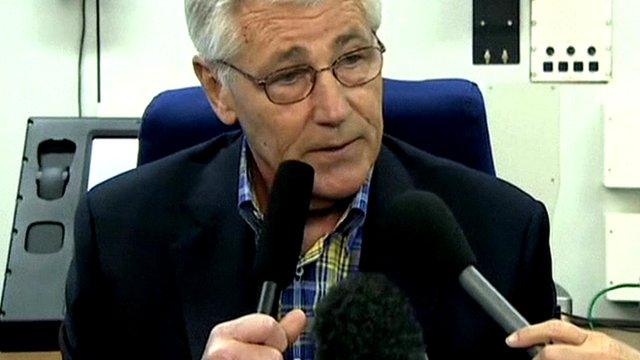
- Published1 June 2014

- Published16 October 2017

- Published1 June 2014
